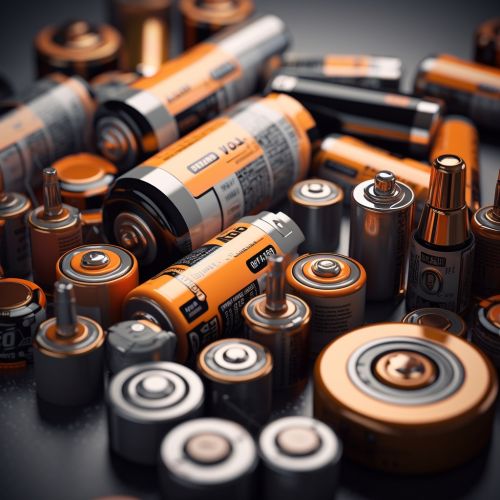Self-discharge rate
Introduction
The self-discharge rate is a term used to describe the rate at which a battery loses its charge when not in use. This is a critical parameter in battery technology, as it impacts the longevity and efficiency of the battery. The self-discharge rate is typically expressed as a percentage of the total capacity lost per month.


Understanding Self-Discharge Rate
The self-discharge rate is an inherent characteristic of all batteries, regardless of their type or construction. It is caused by a variety of factors, including internal chemical reactions, leakage currents, and the presence of impurities. The self-discharge rate is influenced by the battery's state of charge, its age, and the ambient temperature.
Factors Influencing Self-Discharge Rate
The self-discharge rate is influenced by several factors. These include:
- Battery Chemistry: Different types of batteries have different self-discharge rates. For example, Nickel-Metal Hydride (NiMH) batteries have a relatively high self-discharge rate, while Lithium-ion (Li-ion) batteries have a lower self-discharge rate.
- State of Charge: The state of charge of a battery can also influence its self-discharge rate. A fully charged battery will self-discharge at a faster rate than a partially charged battery.
- Temperature: The ambient temperature can significantly affect the self-discharge rate of a battery. Higher temperatures can increase the rate of self-discharge.
- Age of the Battery: As a battery ages, its self-discharge rate can increase due to the degradation of its internal components.
Measurement of Self-Discharge Rate
The self-discharge rate of a battery is typically measured by charging the battery to its full capacity, disconnecting it from any load or charging source, and then measuring the decrease in its capacity over time. This is usually done in a controlled environment to minimize the influence of external factors such as temperature and humidity.
Impact of Self-Discharge Rate
The self-discharge rate has a significant impact on the performance and lifespan of a battery. A high self-discharge rate can reduce the usable capacity of the battery, requiring more frequent recharging. This can be particularly problematic for devices that require long standby times, such as emergency backup systems or remote sensors.
In addition, a high self-discharge rate can lead to the premature aging of the battery. This is because the repeated cycles of charging and self-discharging can lead to the degradation of the battery's internal components, reducing its overall lifespan.
Mitigation of Self-Discharge Rate
There are several strategies that can be used to mitigate the self-discharge rate of a battery. These include:
- Choosing the Right Battery Chemistry: As mentioned earlier, different types of batteries have different self-discharge rates. Therefore, choosing a battery with a low self-discharge rate can help to mitigate this issue.
- Proper Storage Conditions: Storing batteries in a cool and dry environment can help to reduce their self-discharge rate.
- Regular Charging: Regularly charging the battery can help to maintain its capacity and reduce the impact of self-discharge.
Conclusion
In conclusion, the self-discharge rate is a critical parameter in battery technology. It influences the efficiency and longevity of the battery, and is affected by a variety of factors including the battery's chemistry, state of charge, ambient temperature, and age. Understanding and managing the self-discharge rate is key to optimizing battery performance and lifespan.
